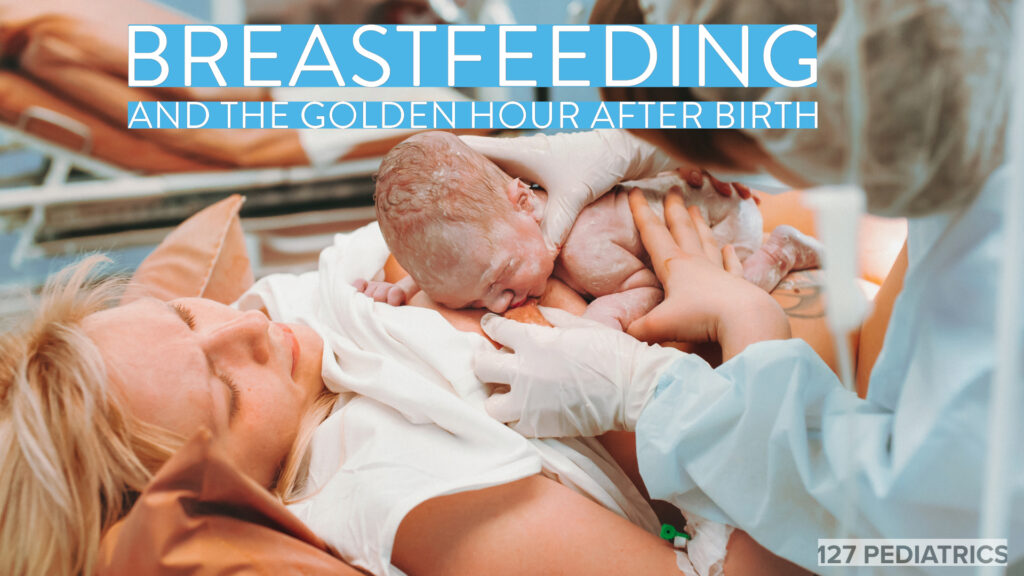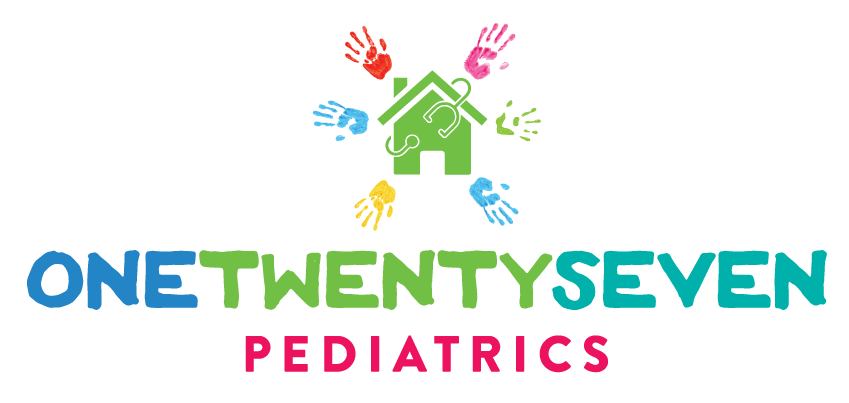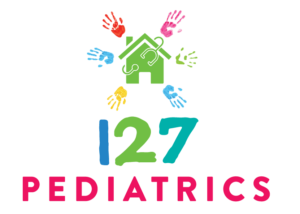After 24 hours of difficult labor, Susan experienced the greatest reward that she had ever received. Late in the evening during early spring, she gave birth to her first child. A baby girl.
While she had been dreaming of this moment for most of her adult life, she felt overwhelmed by the moment. She scrolled through her memory and landed on the breastfeeding research that she had done. As the nurses placed her new baby directly on her chest, she felt an overwhelming sense of peace.
Her breastfeeding research told her that the golden hour after birth was important, and now her mind and body confirmed it.
What is the Golden Hour?
The golden hour is the first hour of a newborn’s life. This critical time is important for many reasons. After the stress of labor and delivery, the baby cries and then becomes calm and alert when placed skin to skin with the mother.
During the first hour after birth, a mother and her newborn baby should enjoy uninterrupted skin to skin time together. All newborn infants should be placed in this position unless there is a medical reason to keep them from doing this. All newborn assessments should be done while the baby on mother’s chest. Those that cannot be done, such as obtaining a birth weight, should be delayed until after the golden hour is complete.
Additionally, while delayed cord clamping is the norm for most birthing hospitals these days, it should not interrupt skin to skin time. The umbilical cord can stay attached while the baby is laying on mother’s chest. Furthermore, umbilical cord clamping can take place while the baby is skin to skin with mother.
Immediate skin-to-skin contact with the mother facilitates the baby’s transition from intrauterine to extra-uterine life. Their physiological systems adjust from breathing in amniotic fluid to breathing air. Not only does direct skin to skin contact with their mother help regulate their body temperature and blood sugars, but it is also key in the initiation of breastfeeding.
Advantages of Skin to Skin Contact for Babies
Newborns experience many benefits of skin to skin contact with their mothers during the golden hour:
- Decrease stress levels
- Stabilize body temperature
- Special time of bonding with their mother
- Regulates their blood sugars
- Controls variations in heart rate and respiratory rate
In addition, skin-to-skin contact promotes successful breastfeeding. When the baby is placed on the parent’s chest and allowed freedom to attach to the breast in the first minutes after birth, breastfeeding often goes more smoothly for the long term. This small act in the first minutes of a newborn’s life makes a huge difference in their ability to continue breastfeeding.
Furthermore, research has shown that being placed on a mother’s chest after birth can effectively reduce crying in infants. The physical contact, familiar scent, and soothing vocalizations of the caregiver contribute to a sense of comfort, reassurance, and security. This time for bonding as well as reduction in stress levels sets the baby up to experience all of the benefits of breastfeeding.
Benefits for Mothers
The golden hour is not just for the baby, it also benefits the mother as well. Skin-to-skin bonding during this time causes a mother’s brain to release oxytocin. Also known as the “feel good” hormone, oxytocin causes the uterus to contract down and prevents postpartum hemorrhage. Additionally, oxytocin is involved in the letdown reflex which allows breast milk to be released from the breast.
Furthermore, skin-to-skin contact during the golden hour strengthens the emotional bond between mother and newborn. This closeness fosters feelings of love and connection. It will also boost your confidence as a mother to a new baby. Lastly, this golden hour time also decreases the likelihood of postpartum depression and anxiety.
Whether you deliver your baby via a caesarean birth or a vaginal delivery, the golden hour sets you and your baby’s postnatal life off to a good start.

Breastfeeding and the Golden Hour After Birth
The golden hour after birth is beneficial for both short-term bonding with baby and long-term breastfeeding success. Research shows that breastfeeding within the first hour of life increases the likelihood of achieving your breastfeeding goals.
Additionally, skin-to-skin contact facilitates the baby to naturally latch onto the breast in a low stress environment. The warmth and scent of the mother’s skin stimulates the baby to find the breast. Often, the baby will go through the stages of searching, crawling, and latching onto the breast.
As a new mother, your milk supply will benefit from investing in the golden hour.
Baby Friendly Hospital Initiative
The Baby Friendly initiative is a global program launched by the World Health Organization and UNICEF to support breastfeeding and newborn care. Within these guidelines, they include standards for maternity facilities. One of the main components of these standards is to allow for uninterrupted skin to skin time in the first hour of life.
Ten Steps to Successful Breastfeeding
- The organization should adhere to the International Code of Marketing of Breast-milk Substitutes
- Have a documented infant feeding policy
- Ensure that staff are adequately knowledgeable and skilled to provide breastfeeding support.
- Encourage immediate skin-to-skin contact and breastfeeding after birth.
- Provide support for mothers to start and continue breastfeeding and address any difficulties.
- Do not give breastfed newborns any food or fluids, unless medically necessary.
- Allow mothers and infants to stay together and practice rooming-in.
- Help mothers understand and respond to their infants’ feeding cues
- Educate mothers about the use and risks of bottles, nipples, and pacifiers
- Coordinate discharge to ensure ongoing support and care for parents and infants.
Is it Necessary to Pick a Baby Friendly Hospital?
The Baby Friendly initiative is just one method by which birthing facilities can support skin-to-skin contact and breastfeeding during the initial hour after birth.
Just because a facility is not officially designated as “baby friendly” does not mean that they do not adhere to these practices. The designation requires lots of jumping through hurdles and not all facilities are set up to pass the rigorous requirements. Be sure to visit the hospital or birthing center prior to choosing where to give birth. Most facilities offer tours where you can have a look at the place as well as ask any questions that you may have.
Whether you deliver at a birthing center or a hospital, it is important to have a birth plan and/or a breastfeeding plan that outlines your desires. Be sure to include uninterrupted skin-to-skin time in the first hour of life in your plan. Not only does this magical time create a beautiful memory, but it also sets a solid foundation for breastfeeding success.
How Can 127 Pediatrics Help You on Your Breastfeeding Journey?
At 127 Pediatrics, we like to consider both the needs of the mother as well as the baby when it comes to breastfeeding. We offer many free resources that can help you no matter where you are in your breastfeeding journey.
If you would like to stay up to date on all of our offerings as well as keep a steady flow of evidence based breastfeeding information hitting your inbox each week, be sure to sign up for our newsletter. Click the link below and we will get you added to the list.

© 127 Pediatrics, April 2024
This article is for information purposes only. Please consult your personal physician for medical advice.

Dr. Andrea Wadley owns and operates 127 Pediatrics. She started the practice in 2018 as a way to provide a more personalized option for both pediatric and breastfeeding care in the DFW metroplex. As an extension of her practice, she also offers breastfeeding consults as well as online education.


